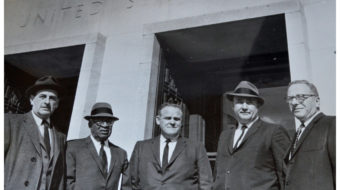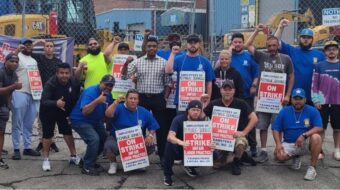
Workers’ Correspondence
New York City’s rapidly increasing cost of living makes residency within its five boroughs unaffordable. During recent contract negotiations between the city and AFSCME DC 37 moves were made toward giving public workers the right to live in six counties outside of the city.
The police and fire departments already have agreements allowing their workers to live outside the city. This is a complicated issue. Historically, city residents pressed the City Council to pass an ordinance barring police officers from living outside the city, a move aimed at preventing police brutality. Victims’ families in African American and Latino communities believed that officers living in all-white suburbs were more likely to be tainted with racism and had no connection with the people they were supposed to protect. The desire to have police live where they work has some parallels with the feeling that other city workers should live in the same neighborhoods as the residents they are providing services for.
However, many union leaders now oppose residency requirements because of the city’s impossible housing costs. While this is certainly the case, perhaps unions should take the position that the city should adopt policies enabling public workers to live where they are servicing their constituents.
The easing of the residency requirement is not going to help public workers do a better job but rather the added commuting time will add stress to their daily lives. A representative of DC 37 told me recently that some of his members are traveling two and a half hours a day, one way.
Unions don’t make housing policy, but they have political clout — especially here in New York. They should pressure representatives to curb the market forces that price the average worker out. Ways we can do this include building labor-community coalitions to preserve and extend public housing, rent control and stabilization, and opposing development projects that place profits above human needs.
A stadium project on Manhattan’s west side was defeated by a grassroots neighbor-to-neighbor campaign. Immediately after its defeat, Mayor Bloomberg dropped it like a hot potato and the mass media followed suit.
Another example is the Atlantic Yards project to build a mega arena and housing project in Brooklyn. This project will displace 3,000 families, but only 250 of these will be eligible for new apartments. Nearly $2 billion in public funds is providing more than half the funding for the project. The community is in court at this time trying to reverse the decision of the governor’s development agency, the Empire State Development Corp., to go through with this project.
The courageous stand taken against the mayor and Gov. George Pataki last December by TWU Local 100 spoke to all public workers who were tired of givebacks and cutbacks.
DC 37’s new contract is a big improvement over the previous one, which had left public workers behind in wages and benefits. The new contract provides an across-the-board wage increase of 9.5 percent over 32 months, a $40 million contribution to the union’s Health and Security Fund, and no givebacks on pensions or starting salaries.
The United Federation of Teachers has just signed off on a favorable contract 11 months early. This has given impetus to the coalition of public workers headed by UFT President Randi Weingarten which includes an incredible cross-section of workers from national and international unions like the Teamsters and SEIU. This coalition of public workers can be the vehicle to pressure the mayor to change the housing policies in this great city to meet the needs of its people.
gfalsetta @ cpusa.org









